Lab Measurements with the Audio Analyzer APX555 from Audio Precision
Since we own in our Lab the flagship Audio Analyzer APX555 from Audio Precision, we publish some measurement results from commercial devices.

Please note, that we offer measurements from your devices in our LAB. You will get world leading measurement equipment plus our experienced engineering. The results from an audio analyzer APX555 from Audio Precision are worldwide recognized as a reference. We can do small series batch testing as well. Please do not hesitate to contact us.
Wireless RF link Lekato 5.8GHz for dynamic microphones
The 'Lekato' RF-transmission system is a modern representative of wireless systems for dynamic microphones at an affordable price
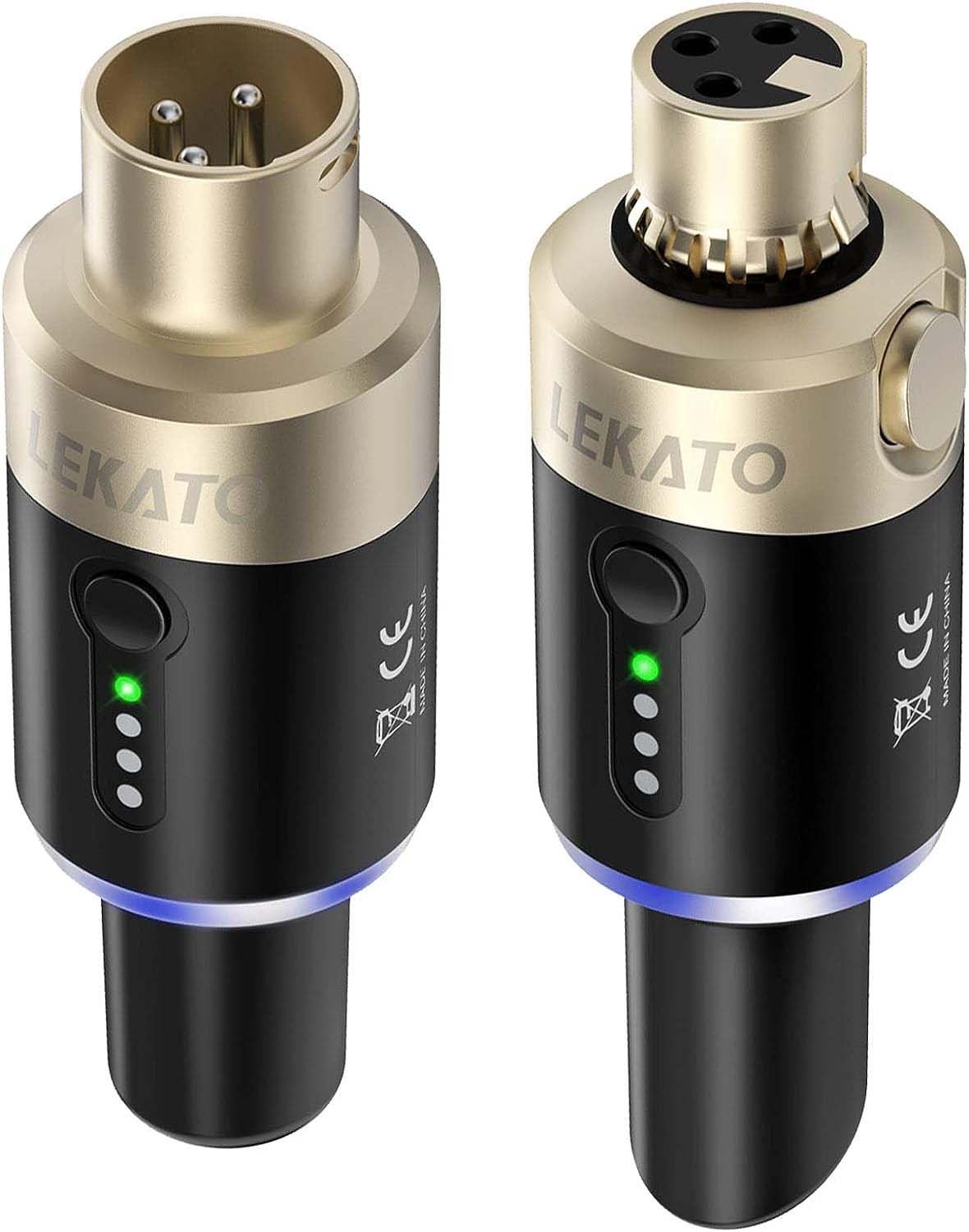
Technical data:
- XLR input and output
- Radio frequency 5.8Hz ISM band
- 4 channels
- digital transmission auf audio with 48kHz and 24bit
- analog bandwidth 20-20kHz
- supports dynamic microphones, only (no P48V phantom power)
- SNR 105dB (according to manufacturer)
- Delay 5ms (according to manufacturer)
What signal quality do we achieve in practice with such device?
To answer this, we measured the Lekato wireless system in our LAB with an APX555 from Audio Precision .
First, the dashboard
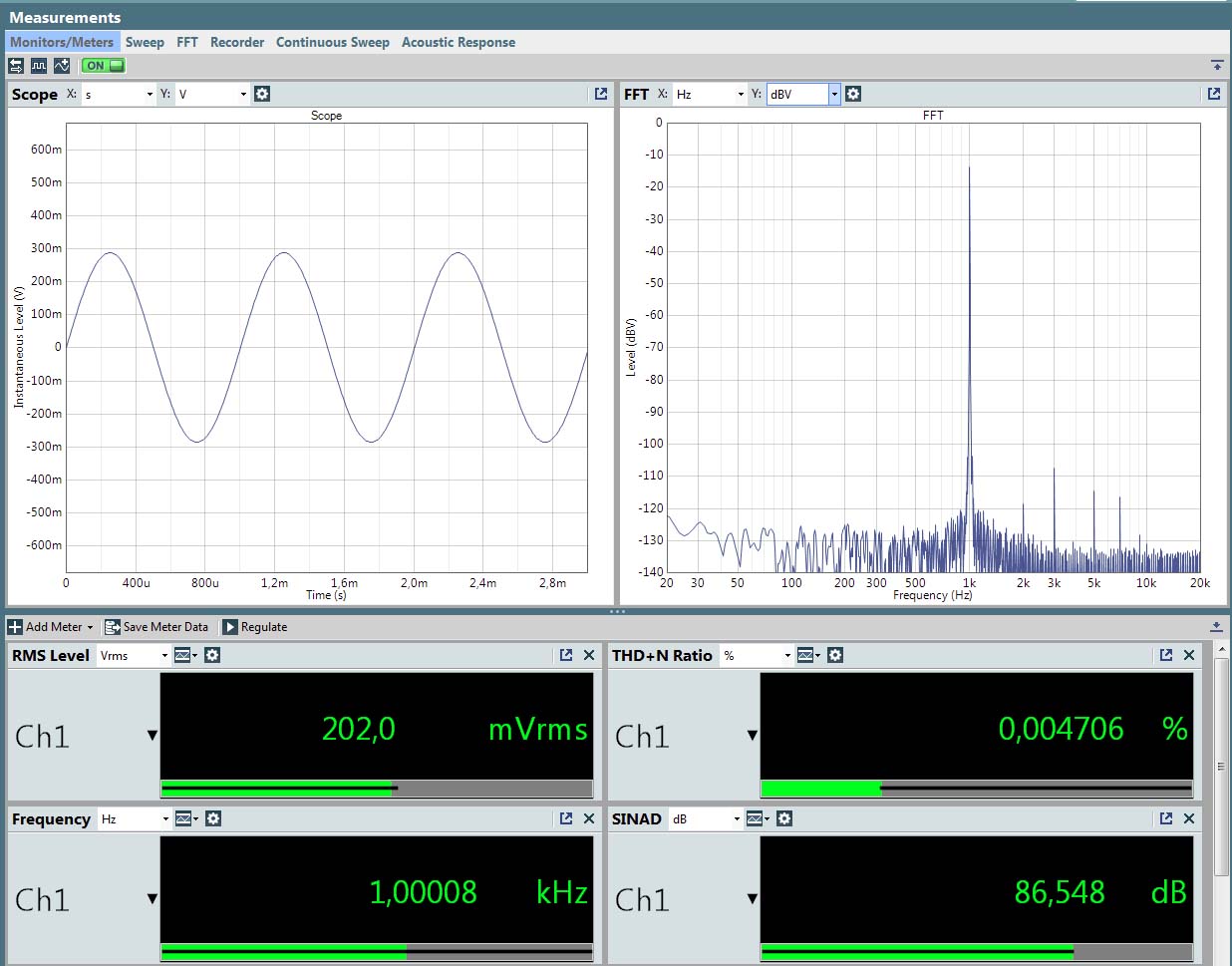
The distortions are pleasingly low for a RF system.
Let's look at the frequency response
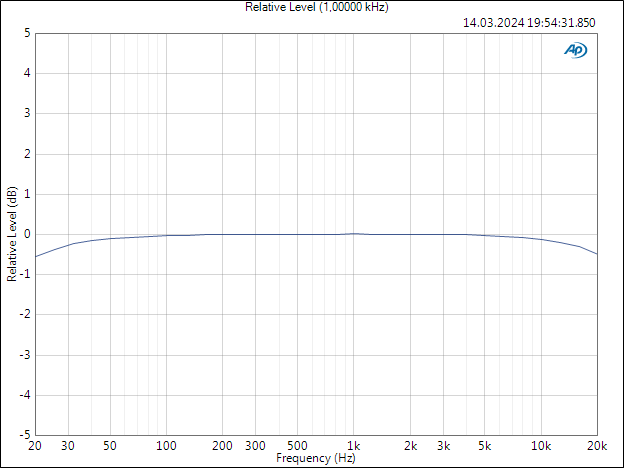
This frequency response can be considered ideal and shows few surprises.
What input levels does the system cover? As an answer to this, we measured the THD+N vs. the input level
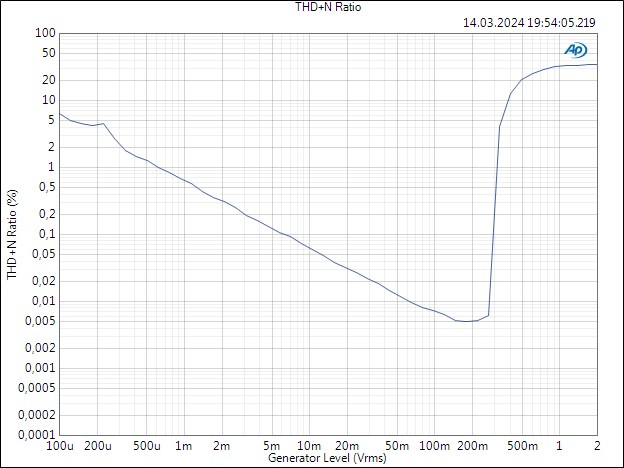
From around 260mV RMS the system gets into clipping. This maximum level indicates, that the system is clearly designed for microphone levels and not line levels.
The manufacturer does not provide any information about possible compression techniques. However, it is very unlikely that the signal will be transmitted uncompressed. There is simply not enough radio bandwidth for this.
In order to track down artifacts caused by compression algorithms, we take another look at the FFT at 1kHz and 100mV RMS.
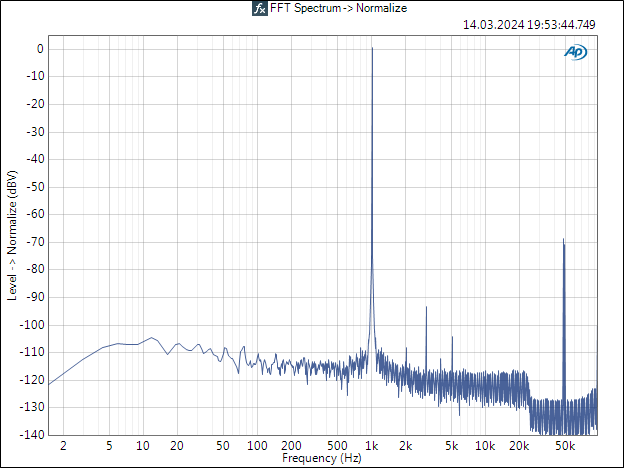
In this case we increased the analog bandwidth to 96kHz. You can clearly see spurs of anti-aliasing filters at 50kHz.
But that's not the focus here. The signal looks very clean.
Now we add a second tone at 10kHz to the input. The level at 10kHz has been reduced by 40dB.
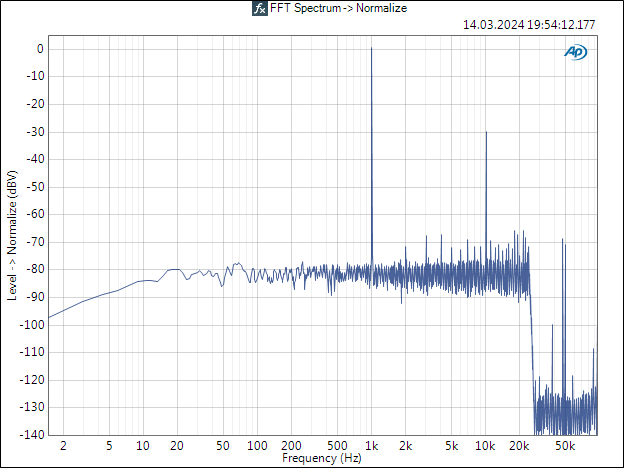
You can see that the noise floor is significantly higher. The compression algorithm can transmit a single tone with almost no loss.
With two tones the bandwidth is no longer sufficient and artifacts occur.
Signal-to-noise ratio (SNR)
The manufacturer advertises the product with an SNR of 105dB. The measuring procedure is not specified. However, in the best case scenario we achieve an SNR of 95dB at an input level of 250mV and A-weighting.
Delay between input and output
The delay is 6.8ms and is within the manufacturer's specifications of 5ms.
Measurement report
The complete measurement report can be found at Lekato 5.8Ghz wireless system measurement report


